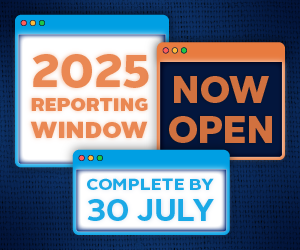Preparing investors for policy action and emergence of new nature markets
The Inevitable Policy Response (IPR) has launched FPS + Nature, (FPS+N) the first integrated nature and climate scenario published for use by investors. FPS+N incorporates interrelated climate and nature trends to IPR’s flagship 1.8C Forecast Policy Scenario to create a realistic assessment to help investors respond to the climate and nature emergency.
FPS+N analyses forceful responses to both climate change and nature loss out to 2030 and 2050, grounded in existing and emerging policy action. With calls to action and mandatory reporting of biodiversity-related risks gaining increasing global support, FPS+N provides investors and policy makers with a credible, high conviction base demonstrating how the effects of both nature and climate policies could shape the future of land use.
IPR FPS+ N sees nature-related policies increasingly impacting the land use sector with effects filtering through the whole economy and interacting with climate action across:
- food
- energy
- nature-related goods, service and assets
- supply chains and
- the global environment
COP 15 in December foreshadowed a new wave of momentum towards protecting nature and halting global biodiversity loss with increased emphasis on public and private finance aligning financial flows with the Global Biodiversity Framework and the 2050 Vision for Biodiversity.
FPS+N incorporates additional policy levers that support the nature transition, land protection / restoration, and nature markets to help investors understand how the effects of both nature and climate policies could shape the future of land use.
It fills a crucial gap in conducting robust risk / opportunity assessments, providing investors with a forward-looking view on how policy, technological and social trends could impact investment value drivers.
FPS+N forecasts growth in nature markets through formalisation of nature-related targets, creation of market infrastructure and that could support emergence of voluntary biodiversity credit markets, and potentially be integrated with NBS-based carbon markets. Revenue potential estimates from generation of biodiversity credits could be USD18 billion annually by 2050.
NBS could grow to reach USD 22 billion in annual revenue in 2030, and USD 204 billion in annual revenue in 2050, as corporates and governments pursue cost-effective carbon mitigation options that also produce nature co-benefits.
The new scenario also covers six other policy areas at the nexus of land use, climate and nature (carbon pricing, bioenergy, diets, deforestation, sustainable agriculture and food waste) and includes a detailed analysis of six different types of Nature Based Solutions (NBS), including blue carbon options such as mangrove restoration.
Accompanying the release is an FPS+ Nature Value Drivers Database, an open access resource for incorporating over 80 Land Use Value Drivers for financial institution and policy maker use and complement the previously released Value Drivers datasets for Energy, Land Use & Tropical Soft Commodities.
Mark Fulton, Project Director, Inevitable Policy Response:
“Biodiversity loss is fast emerging as a disaster that needs to be addressed now. The Inevitable Policy Response is unique in embedding biodiversity into a land scenario and interlinking with an energy scenario, all in a climate transition context.”
Daniel Gallagher Head of Climate Technical Guidance, Principles for Responsible Investment:
“IPR’s underlying value is built in part on an ability to synthesize forward looking assessments against current developments to aid investor analysis and decision making. IPR Nature expands for investors an understanding of the growing interrelationship between climate, nature and land use outcomes and the impacts across multiple asset classes.”
Jason Eis, Executive Director, Vivid Economics:
“The policy response to the nature crisis could result in material shifts to economic and financial value in critical sectors. Regulators increasingly expect financial institutions manage these nature-related impacts and risks alongside climate risk. This new analysis demonstrates how financial institutions can deploy forward-looking scenarios to assess both nature and climate related risk in an integrated fashion and meet regulatory requirements for nature-related disclosure.”
Supporting Documents:
IPR Forecast Policy Scenario + Nature (FPS + Nature) Jan 2023 (Detailed Report)
Attachment: IPR FPS + Nature Report Key Findings (Fact Sheet)
Documents are available for download post embargo on theIPR Forecast Policy Scenario + Nature webpage.
For more information:
Communications Manager
Inevitable Policy Response
+61 0407420 064
[email protected]
Notes for Journalists:
IPR Scenarios:
The IPR’s existing scenarios focus on forecast (1.8C FPS 2021/22) and required (1.5C RPS 2021) climate-related policies, tracing their impact on the energy and land use sectors.
1.8°C Forecast Policy Scenario (1.8 FPS): The Forecast Policy Scenario (FPS) is IPR’s current assessment of what is expected to happen, in terms of future policy developments and the subsequent impact on emissions reduction and temperature outcomes.
IPR FPS + Nature (2023): Is the first attempt by IPR to capture the impact of forecast climate-and nature-related policies, focusing on the land use sector. It represents a preliminary scenario of what might happen when nature-related policy is incorporated into a climate-related scenario.
About Inevitable Policy Response (IPR): The IPR is a climate transition forecasting consortium that aims prepare institutional investors for the portfolio risks and opportunities associated with a forecast acceleration of policy responses to climate change. To help prepare markets and investors IPR then models in detail the impact of the forecasted policies on the energy system, food & land use system and real economy. More information is available here.
The IPR was commissioned by the Principles for Responsible Investment (PRI) in 2018 and is amongst international investor based initiatives supported by the PRI.
A research partnership led by Energy Transition Advisors conducts the initiative’s research with scenario modelling by Vivid Economics, and contributions from Kaya Advisory, the Grantham Research Institute, the London School of Economics and Political Science, the 2Dii, the Carbon Tracker Initiative, the Climate Bonds Initiative and Planet Tracker.
Downloads
Download the full Media Release
PDF, Size 0.23 mbIPR FPS + Nature Report Key Findings Fact Sheet
PDF, Size 0.19 mb











